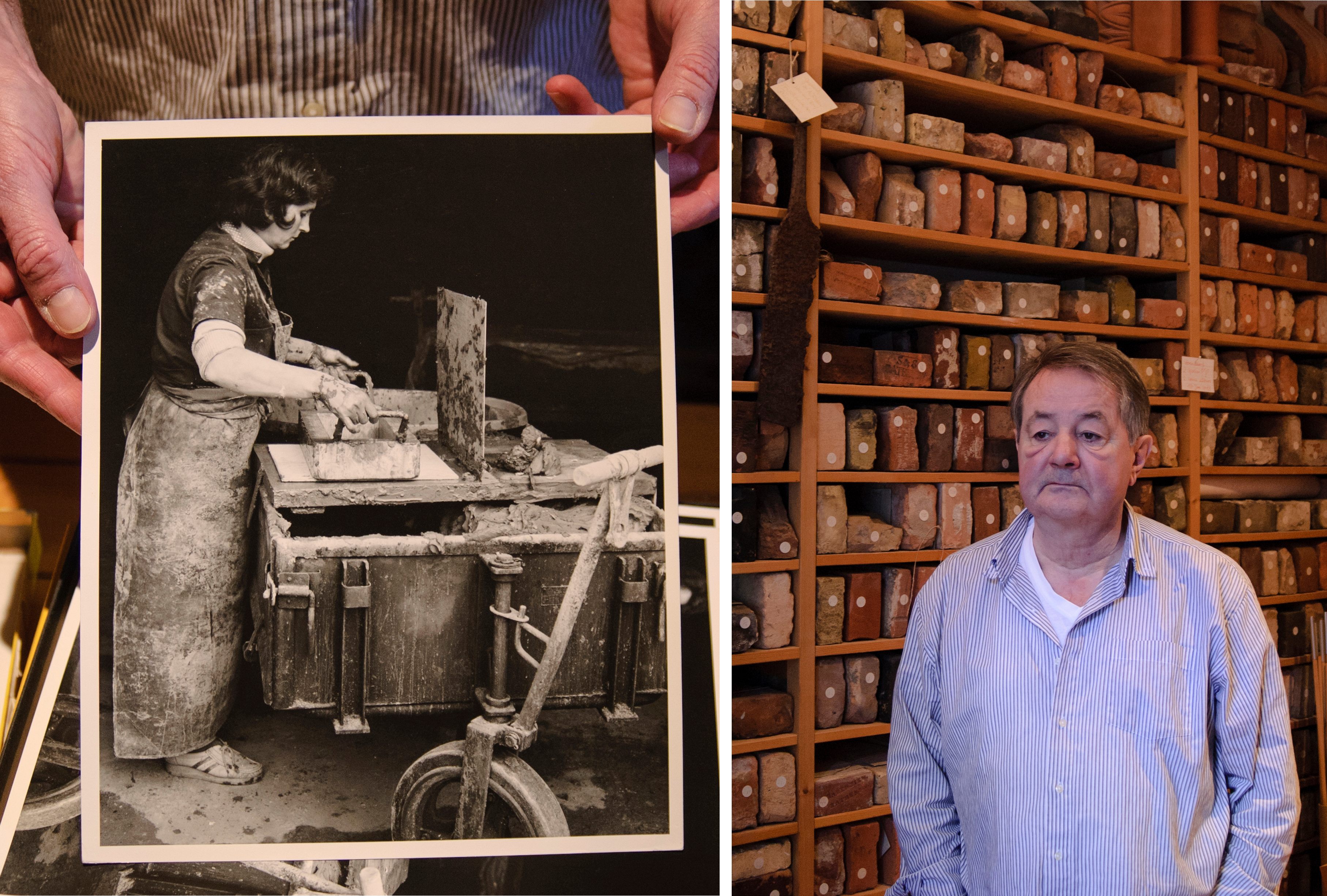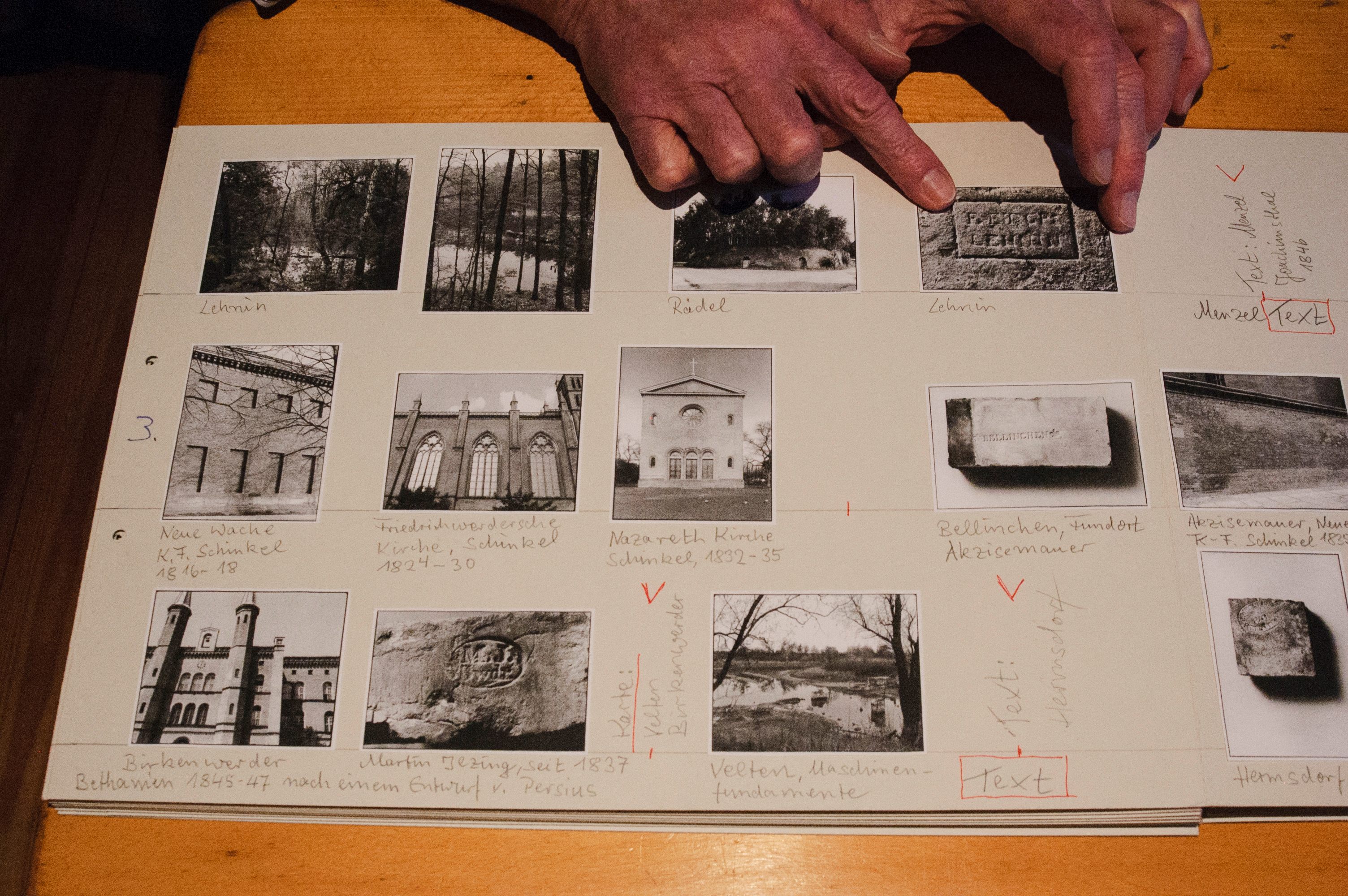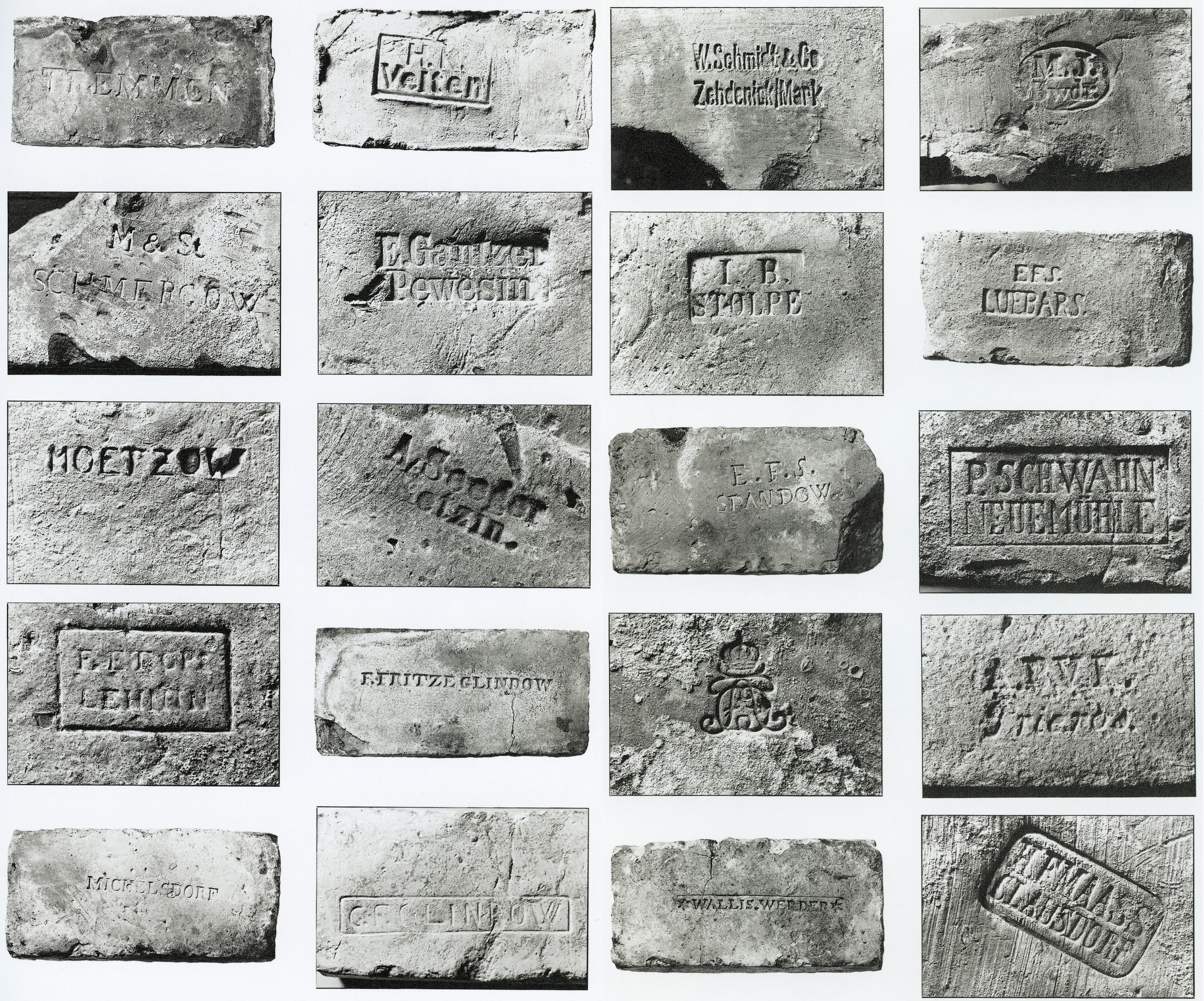Inside Berlin’s Secret Brick Museum
Over the last 30 years, Karl-Ludwig Lange has amassed more than 1,800 unique chunks of clay.

Karl-Ludwig Lange is a German photographer known for his black-and-white photos of Berlin. Starting in the late 1960s, he made a name for himself as a restless flaneur with a camera, capturing the architecture and street life of Germany’s capital. Over the decades, he has documented the city’s political and cultural shifts. But Lange is more than a prominent photographer—he is also one of the biggest brick collectors in the world.
Sixty-nine-year-old Lange has been stockpiling bricks for almost 30 years now. He says he owns more than 1,800 unique bricks, weighing a good 14,000 pounds. Each one of the artifacts in Lange’s mammoth collection bears its own design and stamp and resides on specially constructed, floor-to-ceiling wooden shelves in his apartment in Wedding, a district in Northwest Berlin.

The humble chunk of baked clay first captured his attention after a chance encounter in 1990, when he got an assignment with the architectural magazine Bauwelt to photograph an old brick furnace, built in 1868, which sat 22 miles west of Berlin in the state of Brandenburg.
“It’s the only faithfully preserved ring furnace in Europe, built after plans by the great inventor Friedrich Eduard Hoffmann,” says Lange. “The German government had decided to save it and to use it to make facade bricks for reconstruction of churches and other public buildings in Berlin.”
The magazine published Lange’s photos in early 1991. Soon after, he learned that in Freiwalde, another town in Brandenburg, about 41 miles south of Berlin, there was another working brick factory. “That’s what really got me started,” says Lange.

Lange became so obsessed with the history of bricks and brick-making around Berlin that in the years that followed, he managed to locate the ruins of hundreds of factories. He did so using more than 250 Prussian military maps from the mid-19th century, essentially turning himself into an industrial archaeologist.
The trigonometric maps Lange used are amazingly accurate. They were prepared with the use of the triangulation method, which utilizes three points to determine a desired location. A lot of churches and brick factories were used as “trig points,” as often these were the only solid buildings in an otherwise predominantly agricultural region. Lange likens the Prussian military maps, with their vast amount of detail, to the Domesday Book, a comprehensive record of landholding from 11th-century England.
“I found 150-year old trees marked on the maps that were still there—we’re talking about that level of detail!” remembers Lange.

All in all, over three decades, Lange says he has visited more than 1,300 brick factories in around 350 towns and villages in the vicinity of Berlin. Only eight of the brick factories were still working when he arrived.
Lange took photos and collected brick samples at every site. Some of the artifacts in his massive collection date from as early as the 11th century. In addition to this, Lange produced an extensive library-like catalog for each item in his collection. Each brick is described on a single card, with a photograph and information about its age and maker, as well as the place and date it was found. Lange has also amassed a library of rare books about bricks and brick-making, some of which date back to 1765.
But why bricks? According to Lange, this is the best way to understand how cities, and Berlin, in particular, developed. Like most medieval European cities, the early secular buildings in the German capital were crudely built, often using flammable materials including wood and straw. This changed around 1820 when the brick industry started flourishing.

“Due to the large clay deposits in the Brandenburg area, a vibrant brick industry emerged in the early 19th century,” says Lange, adding that “the history of brick-making around Brandenburg is essentially the story of people who built Berlin.” And this story is rarely a happy one. For example, a male worker in the late 19th century would produce up to 8,000 bricks a day, working for 16 exhausting hours. Women and children were also employed in the industry, but unlike men, female workers would produce about 250 bricks in an eight-hour workday.
“Naturally, most of the brickmakers died pretty young, around 45 years of age, due to the hard work and bad living conditions,” says Lange.
By 1900, Berlin used about three billion bricks per year, which were transported to the city via its 120 miles of waterways. Most of those blocks were made by hand in more than 1,500 brickyards within a radius of 55 miles around the city. Larger buildings, such as the former railway terminus Anhalter Bahnhof, needed 16 million bricks, and the Reichstag required 30 million. According to the German historian Matthias Roch, between 12 and 15 billion bricks were delivered to Berlin between 1850 and the First World War, a time in which Berlin grew rapidly.

Today only a few brickyards can be found in the Brandenburg area. After the First World War, concrete from Upper Silesia (in today’s Poland and Czechia) and Westphalia (in Northwestern Germany) became more commonly used than bricks because of its lower price. Concrete has a larger compressive strength than bricks and could also be reinforced with steel, giving it higher tensile strength as well. Concrete could be poured into large molds on site, making construction faster, while brick structures could only be built one row at a time. Eventually, the nearby brickyards lost their economic base and the concrete won.
Lange’s obsession has connected him with other like-minded people across Germany. In fact, he’s the leader of an exclusive club of about one dozen self-described brick addicts known as the Brick Hunters. The group formed 15 years ago and its members meet two times a year at Lange’s apartment, where they talk about bricks, architecture, city planning, and more over a cup of coffee and cake, an afternoon ritual known as Kaffe und Kuchen.* Sometimes the Brick Hunters organize exhibitions, hold talks, and publish books on their favorite topic.

Lange’s unusual collection currently fills two rooms in his modest apartment, which had miraculously survived the Second World War air raids. The space has wooden floor beams, so the bricks are placed around its load-bearing walls. Just walking into the rooms with walls covered in bricks is overwhelming. Sadly, his collection remains largely unseen by the wider public. Lange’s efforts to obtain funding from the German state and find a permanent place for it have so far been unsuccessful.
“I wanted to have a private museum and I got one. But I’m nearly 70 years old, so what should I do with my brick collection?” Lange asks rhetorically.
According to Lange, the answer to this question might come from Carl Andre, an American minimalist artist known for his artworks involving bricks. Lange says Andre had previously expressed interest in buying the collection and moving it to the U.S. However, Andre himself says that he has no recollection of this. So while it remains a necessarily private affair, Lange—a self-described “crazy man collecting bricks”—continues his tireless efforts to promote his unusual collection.
*Update: This story has been updated to add more detail about Lange’s brick club meetings.



























Follow us on Twitter to get the latest on the world's hidden wonders.
Like us on Facebook to get the latest on the world's hidden wonders.
Follow us on Twitter Like us on Facebook